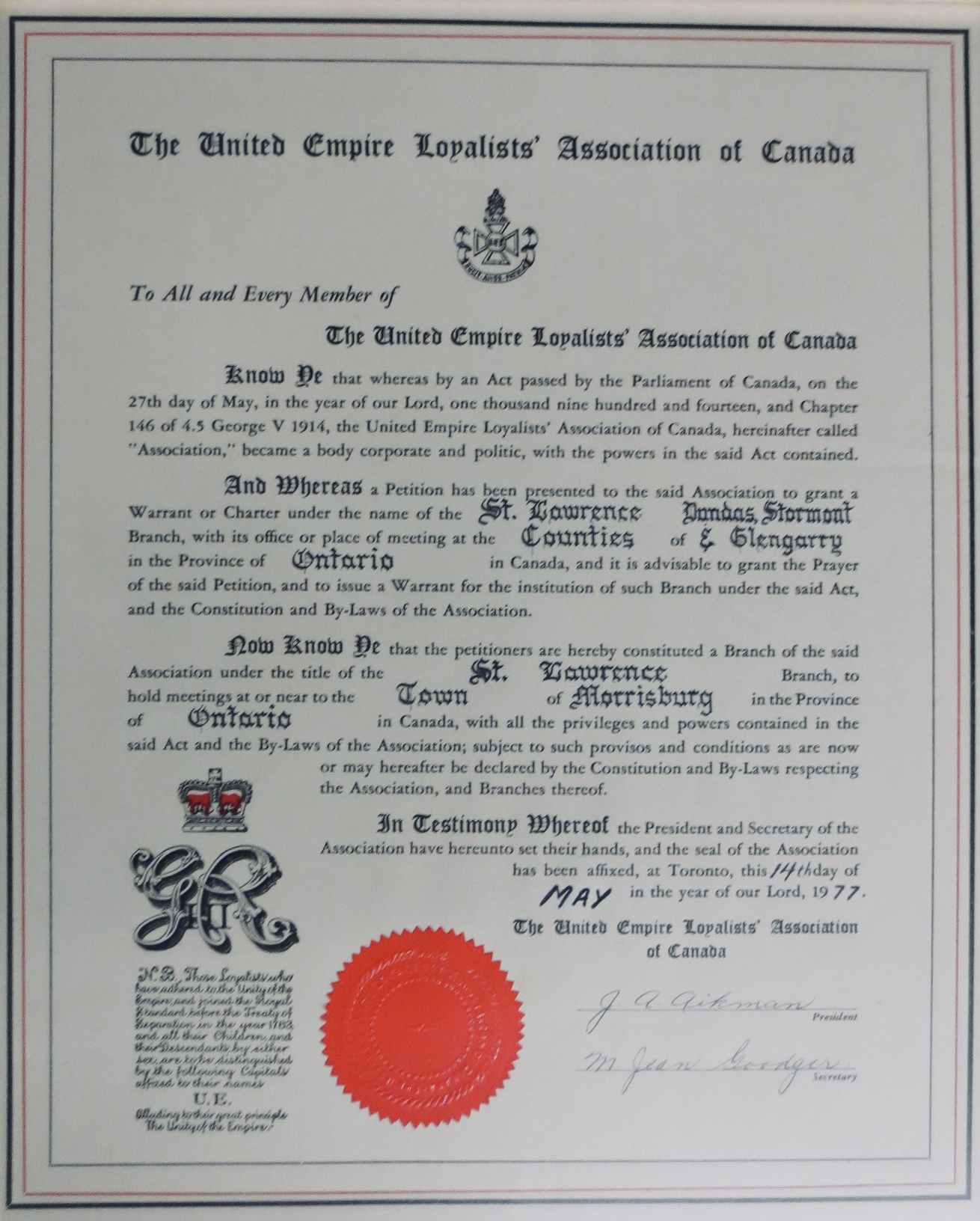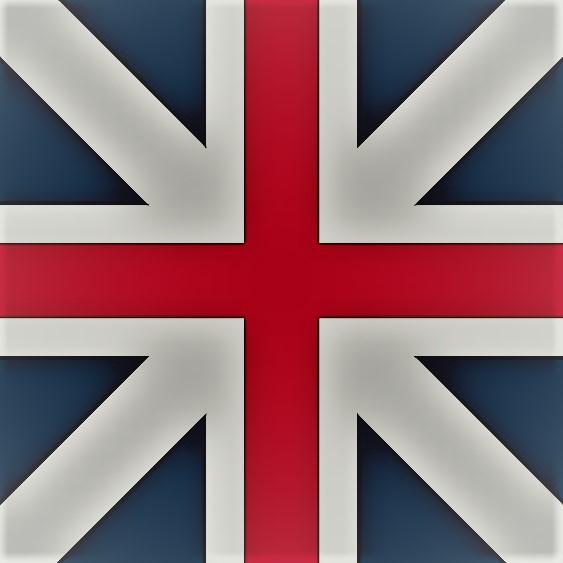About the St. Lawrence Branch
In order to fully serve the needs of its members, the UELAC has many local branches, which occupy specific geographical regions in Canada. One of these is the St. Lawrence Branch.
The catchment area of the St. Lawrence Branch covers the Ontario counties of Stormont, Dundas and Glengarry, which border the mighty St. Lawrence River. This region overlaps with part of the Loyalist homeland: The first six Royal Townships settled by disbanded Loyalist soldiers and their families starting in 1784.
We received our branch charter in 1977, surprisingly late given the rich Loyalist history of our area. We’re making up for lost time: We hold several meetings a year, including an annual autumnal feast; we publish a quarterly newsletter called The Royal Yorker; and we operate the Loyalist Resource Center. Our branch brochure provides additional information.

2024-2026 Executive and Directors
President: Carol Goddard UE
Vice President: Scott Harris
Secretary: Darlene Fawcett UE
Treasurer: Michael Eamer UE
Past President: Ashley Harper UE
Loyalist Resource Center and Genealogist: Lorraine Reoch UE
Assistant Genealogist: Darlene Fawcett UE
Social Media: Ashley Harper UE
Education and Community Outreach: Vacant
Membership: Alison Galbraith UE
Newsletter Editor: Janet Kennedy UE
Webmaster: Ashley Harper UE
Directors at Large:
Michelle Walczak UE
John Johnston UE
About the United Empire Loyalists Association of Canada
The Loyalists were residents of Britain’s Thirteen Colonies who remained loyal to the Crown during the American Revolutionary War (1775-1783). Some historians estimate that one third of the population of the colonies were loyal during that conflict. After the war was lost, most could not remain in the newly-minted United States of America; many sought refuge in what remained of British North America. As such, they laid the foundation, in part, for modern Canada.

The United Empire Loyalists’ Association of Canada (UELAC) was founded in 1914, by a federal statute that outlined four general objectives:
- To unite together irrespective of creed or political party the descendants of those families who during the American War 1775 to 1783 sacrificed their homes in retaining their loyalty to the British Crown, and to perpetuate their spirit of loyalty to the Empire.
- To preserve the history and traditions of that important epoch in Canadian history by rescuing from oblivion the history and traditions of the Loyalist families before it is too late.
- To collect together in a suitable place the portraits, relics and documents relating to the United Empire Loyalists which are now scattered throughout the Dominion.
- To publish a historical and genealogical journal, or annual transactions.
The term “United Empire Loyalists” originates from a post-war proclamation issued in 1789. During the war, the Loyalists were termed “Tories” by their enemies, while friendlier voices called them Loyalists or Royalists. The proclamation, issued Governor Guy Carleton (Lord Dorchester), states as follows:
“These Loyalists who had adhered to the Unity of the Empire and joined the Royal Standard before the Treaty of Peace in 1783, and all their children and their descendants by either sex are to be distinguished by the following capitals affixed to their names: U.E., alluding to their great principle, the Unity of the Empire.”
Members of the UELAC are passionate about the history of the Loyalists during the war, their re-settlement and early history in post-war British North America, and their impact on the development of Canada. An optional part of membership is to demonstrate Loyalist ancestry, thus confirming their right to have the letters U.E. “affixed to their names” and to recognize a personal connection to a Loyalist.

